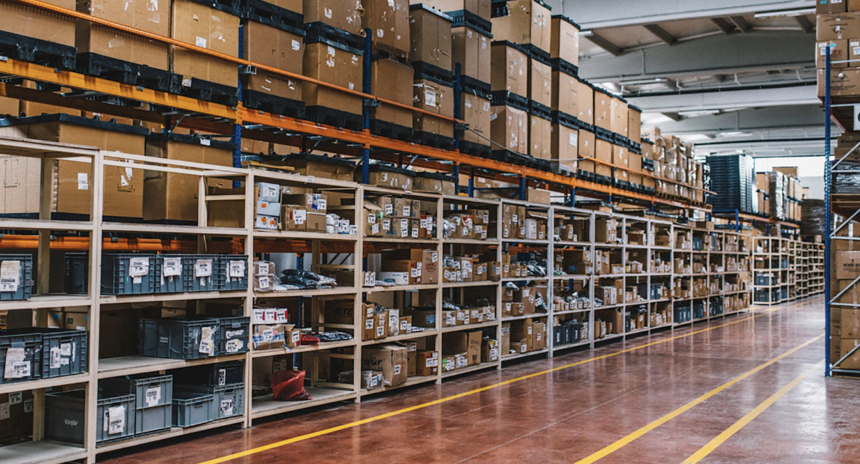Polypropylene strapping has a wide range of applications. Chemically, it is a thermoplastic addition polymer and is widely used for the packaging of consumer goods. It was discovered in 1954 and since then, it has become one of the most popular types of plastic. When it comes to polypropylene strapping, this particular material is one of the most popular types of straps used worldwide.
In this article, we will cover everything you wanted to know about polypropylene strapping including its benefits, applications, recyclability and other such topics.
Advantages of Polypropylene Strapping
Before the popularity of polypropylene for strapping, most of the strapping material was made from steel. Steel is also an excellent material as it is strong and offers excellent resistance to UV and heat. However, it also has certain limitations, especially when used in strapping.
It is much denser as compared to plastic which means it adds a lot of weight when used in large quantities. You can’t stretch steel too much. It also presents a safety risk when it is cut under tension as the steel strips can easily cut people when not cut in the right manner. This is why lightweight polypropylene became the more popular option.
It is lightweight and is widely used for wrapping pallets as well as for bundling things together to prevent pallets from moving while in transit. Here’s a list of some of the many advantages of this particular material for strapping:
One of the biggest advantages of this material is its cost effectiveness. It is one of the cheapest materials available for strapping. Plastic is easily available and one of the cheapest materials available in the market. It has a wide range of applications and its cost effectiveness makes it the most suitable material for strapping. You don’t need to think twice about cost when using it for strapping things together.
It is an excellent choice in terms of strength for light to medium duty applications. There is no other material that comes close to polypropylene when it comes to standard packaging. Steel strapping makes more sense when you need a lot more strength but, in most cases, polypropylene is more than good enough.
Another thing that goes in favour of this particular material is its sheer variety. You can buy the strapping in a wide range of colours, thicknesses and widths which means you have tons of choices and you can choose a particular type of strapping for a particular application. There is no other material that offers this much variety at such a price.
It is also easy to apply as compared to other materials. There are manual, semiautomatic as well as fully automatic machines available to apply strapping and it can be used in various ways as per the requirements.
As discussed above, steel presents a lot of safety issues due to its very fine blade like edges but there are no such safety issues with polypropylene. This material does not have sharp edges which means it is much safer to handle as compared to steel strapping. In fact, most operators can use this material safely without the use of safety goggles and gloves.
Application of Polypropylene Strapping
As far as the applications of this material are concerned, it is an excellent choice for all the applications that require light to medium strength strapping. Its strength, stretchability and cost make it the best material for sealing and reinforcement of cartons as well as for securing pallet loads.
This is the reason this particular material is used for strapping paper, newspapers as well as cardboard and for sealing cartons and boxes. It is also widely used for bundling of agricultural products and textiles as well as fabrics.
In short, it has a wide range of applications.
Polypropylene Properties
There are certain properties of this material that make it best for use as a strapping material. One of the reasons that have made it popular for this particular application is the chemical resistance of the material. This particular material does not easily react with dilute acids and bases which means it can be used for strapping first aid products, chemical cleaners and similar liquids.
While it is relatively chemically inert, it is still a tough material. It has a lot of strength which means it can withstand a lot of abuse without breaking. It also has this unique ability to retain its shape even after the application of a lot of pressure.
That is not the case with steel as it loses its shape after bending or application of a lot of torsion. This particular material shines in this regard and is considered more durable as compared to other materials.
It is plastic which means it is resistant to electricity and has excellent insulation property. This is why it can be used in all kinds of electronic components and for pallet strapping systems. Since it is a lightweight material, especially when compared to steel, it is an excellent choice for a strapping application.
Final Thoughts
Overall, polypropylene is an excellent material for strapping. It is lightweight and has a lot of strength for light to medium strength applications. It is a relatively chemically inert material and is capable of retaining its shape under torsion. It is also recyclable. It is sold in hand grade and machine grade qualities. Machine grade straps are typically better in quality as they are made using a higher grade resin resulting in better uniformity.
Lynn Martelli is an editor at Readability. She received her MFA in Creative Writing from Antioch University and has worked as an editor for over 10 years. Lynn has edited a wide variety of books, including fiction, non-fiction, memoirs, and more. In her free time, Lynn enjoys reading, writing, and spending time with her family and friends.















